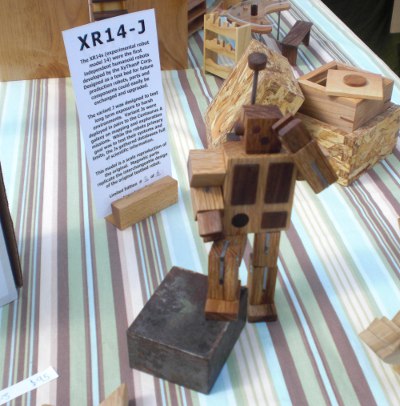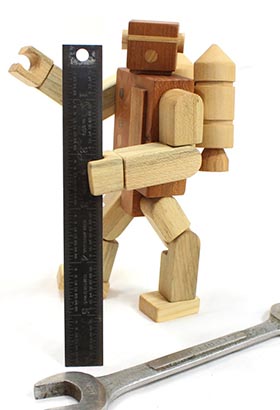Hardwood Clocks are in the works here at the Bungalow and I’m here to give you a behind the scenes tour of their construction.
At first I made templates for the clocks out of cereal boxes. I figured I could mix and match angles, colors, and the like to make pleasing compositions. I took out my compass (hand drafting isn’t dead yet) and cut out 40 or so different angle templates. Then I mixed and matched until the angles added up to 360 degrees (see below).

Now I could be assured my cut pieces of wood would form a perfect 360 circle. All I had to do was transfer the exact angles to select pieces of wood and cut those angles exactly with no margin for error.
Laying out the templates on the wood went well, after that things sort of fell apart. I selected five different woods for the first clock (from top to bottom in the picture) – cherry, hickory, walnut, red oak, and poplar.
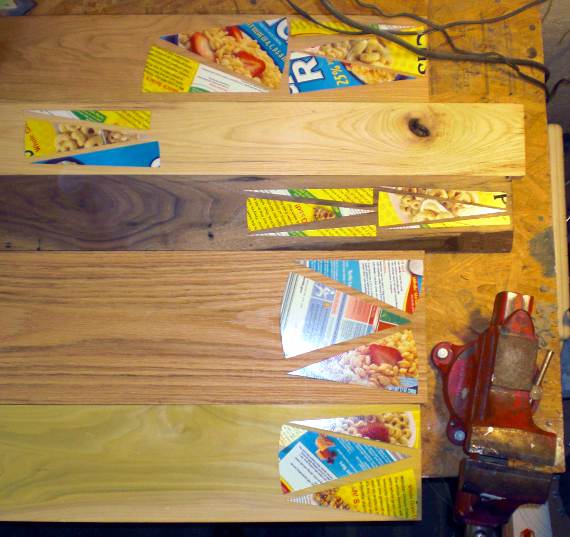
I transferred the angles to the wood with a pencil, cut the pieces to length on the miter saw then turned to the tablesaw. Here is where my grand plan began to unravel. Just how do I cut those angles with no margin for error? I looked around for a laser wielding robot, but I don’t have any in the shop. The best I could come up with was to fall back on high school geometry.
I cut small pieces on the tablesaw with a sled that slides on the top (and keeps my fingers far away from the blade) – see below.
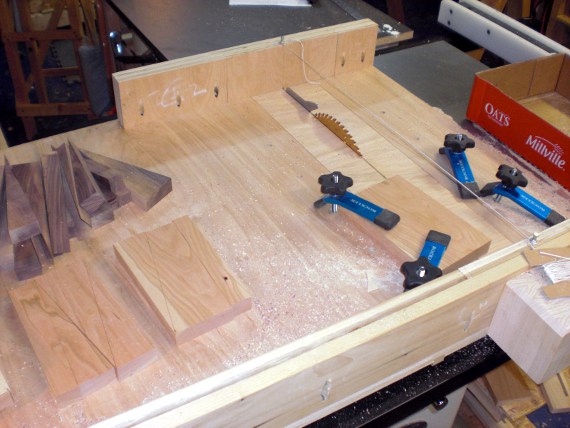
The sawblade leaves a cut line the exact width of the blade (handy) – this forms one side of a plane. Directly above this line I attached a string that I could site the angle of the cut – forming the second side of a plane. Line up the sawblade, the pencil mark on the wood, and the string – and the wood will be cut exactly. Assuming the pencil line intersects the blade/string plane exactly. You can see this in the picture better.
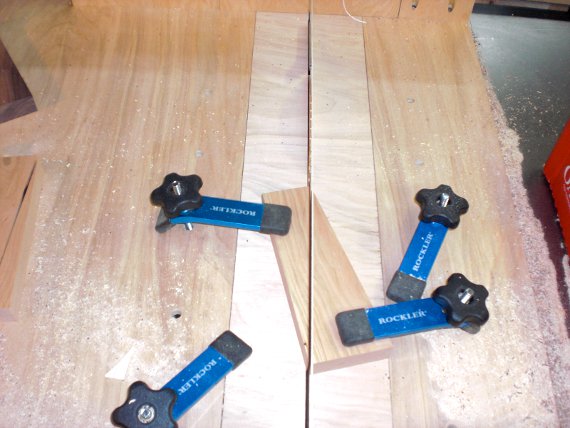
Of course no matter how “well” I eyeballed it, the angles couldn’t be cut exactly so I ditched that plan and just cut a load of different angles, figuring if I had enough angles I could put together a circle later. You can see the blue clamps in the picture above – super handy for holding the wood in place securely and keeping me as safe as possible.
Below you can see stacks of the cut wood. On the top are pieces of walnut. The lower left is hickory and the lower right is cherry. With the cherry you can see how I make the cuts – rotating the wood to keep the grain in as radiating a pattern as possible. In the next post I’ll talk about layout and glue-up of the clocks.
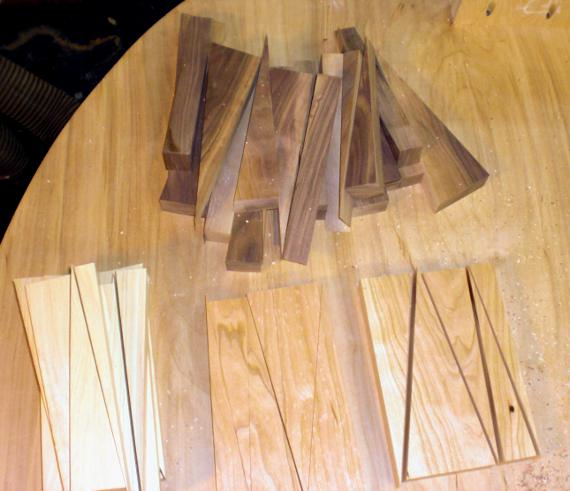
Read the next post in the series here
 And ever popular dollhouse furniture.
And ever popular dollhouse furniture.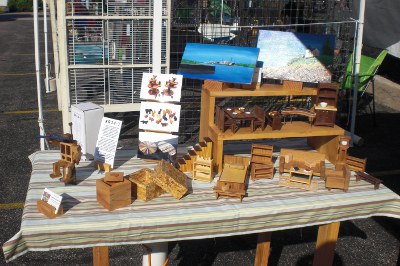 I’ll be adding more products for the upcoming slate of fall shows and I’m going to tweak the booth o give things a bit more pop.
I’ll be adding more products for the upcoming slate of fall shows and I’m going to tweak the booth o give things a bit more pop.



